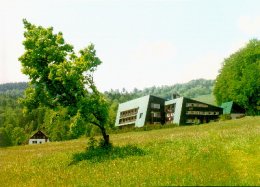Abstracts
Abstract: Our interest is in subsets S of vector spaces V that have special properties. It often turns out that S, together with the 0 vector in V, contains a very large vector space. Sometimes this vector space has additional features, such as being dense or being closed in V. One typical, classical, example is the set ND[0,1] of continuous, nowhere-differentiable functions on [0,1]. L. Rodríguez-Piazza has shown that ND[0,1], together with {0} contains an isometric copy of every separable Banach space. (An even more striking result was subsequently proved by S. Hencl.) F. Bayart and L. Quarta have shown that ND[0,1] contains an infinitely generated subalgebra.
Examples of this type of situation occur in operator theory, spaces of differentiable functions, Fourier series, etc. We will investigate a number of such situations, discussing the relation of this property to Baire's theorem and describing some open problems.
(An old, general introduction to this subject can be found in Linearity in non-linear problems, by R. M. Aron, D. García and M. Maestre, RACΣAM (Revista de la Real Academia de Ciencias: Serie A. Matemáticas), 95 (1) (2001), 7 - 12.)
Abstract: In the past decade there has been a great deal of progress on three inter-related problems in the theory of weights:
- The Rubio de Francia theory of extrapolation and its extensions and generalizations
- The sharp dependence on the Ap constant for one-weight norm inequalities for classical operators, particularly singular integrals
- Sharp two-weight norm inequalities for these operators in terms of two-weight Ap type conditions.
I will synthesize the work of a number of authors; the central strand will be work by myself, Jose Maria Martell and Carlos Perez.
Abstract: Two Weight Inequalities in Harmonic Analysis concern boundedness properties of fundamental operators, like the Hardy transform, Maximal function, or Hilbert transform. These are studied on weighted spaces, with the goal of characterizing those pairs of weights for which the operator is bounded, on a given Lp space.
Typically, the answer is given in terms of certain testing conditions, first found by Eric Sawyer, and very much in the flavor of the T1 Theorem of David and Journe. We will review Sawyer's contributions, which largely solve the 'positive operator' case. We will close with a discussion of the much harder singular integral case, reviewing the work of several authors, including Hytonen, Nazarov, Perez, Treil, and Volberg, as well as the work of the lecturer and his coauthors. Discrete methods will dominate the underlying proof techniques.
Abstract: The local sharp maximal function was introduced by J.-O. Stromberg motivated by an alternate characterization of the space BMO given by F. John. Besides its close relation to BMO, this function is also a very convenient tool for a pointwise control of many operators arising in harmonic analysis. In this series of talks we will discuss a resent result establishing a decomposition of an arbitrary measurable function in terms of local mean oscillations. This decomposition implies easily some basic results related to BMO and sharp maximal functions. But also it yields new applications to singular integrals and Littlewood-Paley operators.
